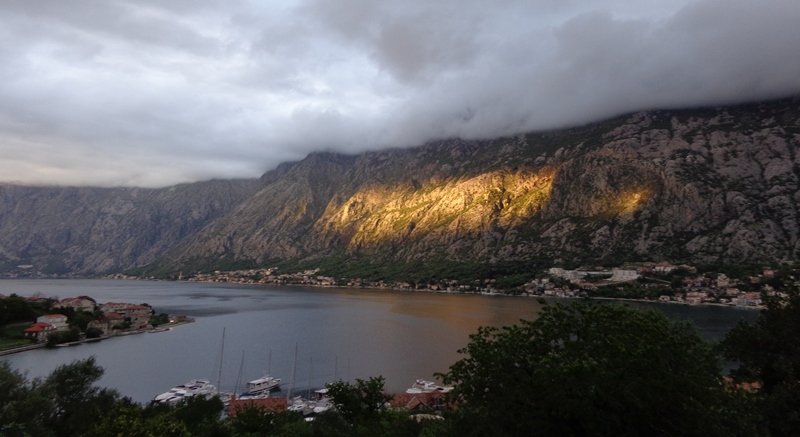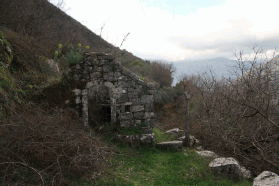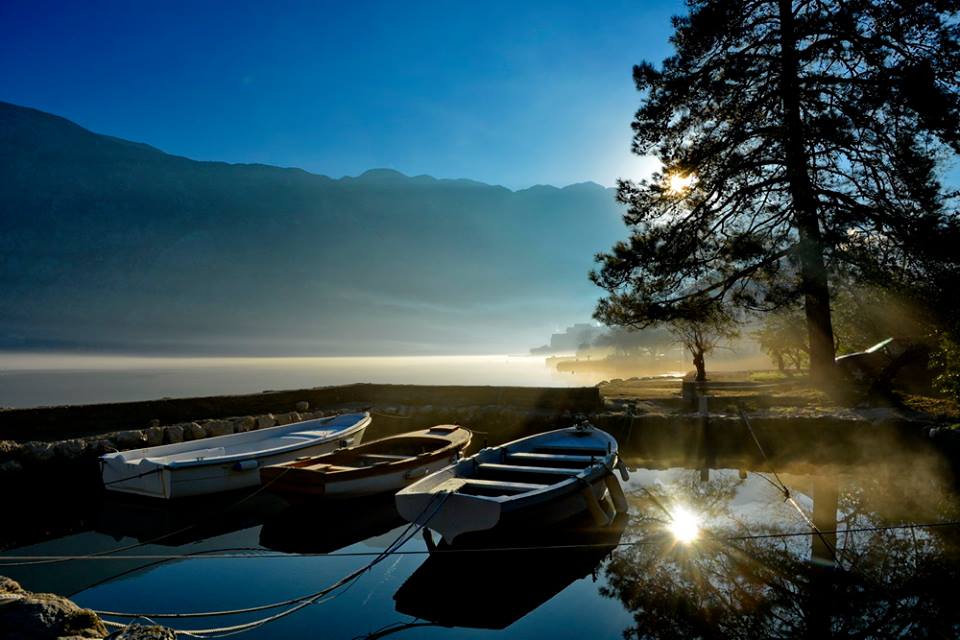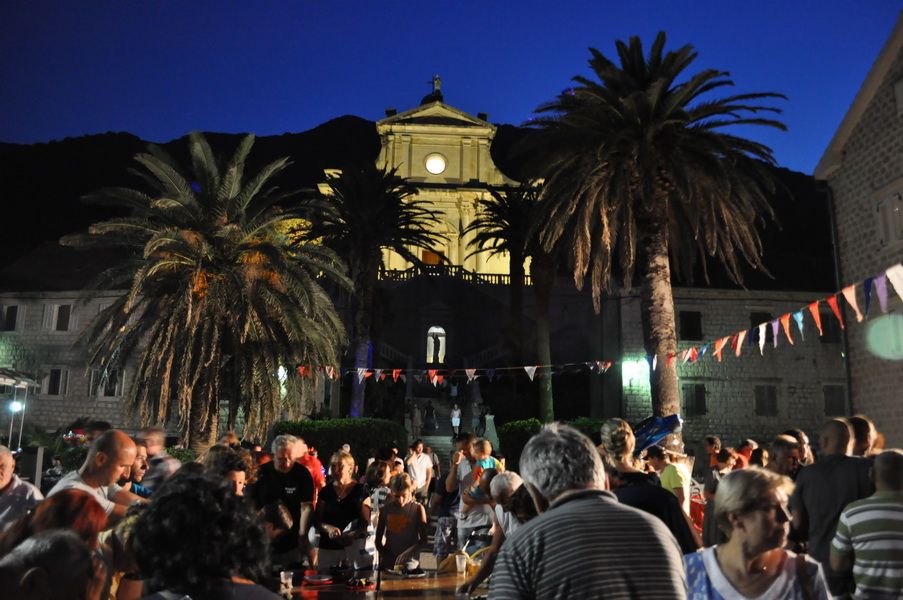January 5, 2019 - Prcanj is the old naval center of Boka Bay once known as a postal center of the Republic of Venice, whose sailors were responsible for the transfer of mail from Istanbul, via Boka Bay, to Venice. It was a place of considerable privilege, ultimately the status of an autonomous maritime settlement. All this has contributed to the economic development of the area, as evidenced by today's gorgeous architecture of houses, palaces, churches, and chapels that descend along the coast in the length of 4 km. Among the valuable objects of cultural heritage, stands the parish church of the Nativity of the Blessed Virgin Mary, one of the most beautiful and most impressive sacral objects in Montenegro. Due to the remarkable cultural landscape, and also the peace of Boka Bay, Prcanj is a favorite summer resort for guests enjoying the embrace of ages, which are traced here ever since Roman times.

Glavati Bay, photo by Antonela Stjepcevic
It was in the Middle Ages within the Kotor district. The land belongs to either the Catholic Church or the Kotor noble families. Kotor's noblemen in Prcanj raise their summer houses, and farmers from Prcanj or the surrounding villages worked on their properties. The settlement here, as in other parts of Boka, is not located directly along the coast, but at a distance of 100 to 200 meters. In Prcanj, this was a besieged hive, made up of small groupings of houses, which were pedestrian roads connected with the property on the coast. Today,
you can discover these old roads as hiking paths in the company of local mountain hikers from Kotor's Vjeverica Club. Or by yourself, with the help of a map that is available at info points of the Tourist Organization of Kotor. On the same paths, the people of Prcanj went to the shore in the Middle Ages, where there were few groups of houses related to navigation and trade at the time, such as gates, small shipyards, and "mandraći." Although they do not enjoy the deserved protection, some of these "mandraći," built with dry stone without binder, resist the teeth of time to this day.
The transfer of the population from the upper settlements to the shore ran gradually. In the middle of the 16th century, due to the development of maritime affairs, economic power is strengthened, and the inhabitants of Prcanj come to the possibility of buying from the noble Kotor's families the properties they used for centuries.

photo by Aleksandra Kapetanovic, expeditio.org
While under the rule of the Venetian Republic, Prcanj gained fame in a rather unusual way. By the end of the sixteenth century, the administration noticed that sailors from here were able to sail to Venice in less time than the government ships. As a result, it was then decided to give Prcanj the responsibility for the permanent postal service of the Republic. Prcanj's status ensured a decree of 1625 that praises the inhabitants of the port for their conscientious and capable handling of the state mail. The order was of tremendous significance for the town, making Prcanj officially a naval town. The economic rise of the site also contributed to the families of merchants, shipowners, and seafarers. After gradually buying property along the coast, they built representative palaces and houses, which at the beginning of the 19th century were over 140.
The town's privileges grew, and, in 1704, Prcanj got its municipal district in Albania Veneta, what was followed by the state's freeing the city of many tariffs. The lifting of tariffs provided an impetus for economic growth which further developed the town's naval character. Maritime trade flourished, and its ships grew in size and number so that by the end of the 18th century the port was hailed as home to over 30 tall-ships. The most common trade goods were Montenegrin and Greek cheese, candles, salted sardines, and Dalmatian and Greek olive oil. The most frequent ports of call for the town's sailors were in the East Mediterranean or the Levant, together with Ancona, Apulia, Venice and Trieste.

photo by Zoran Nikolić
During the Napoleon rule of the Boka Bay, Prcanj lost its significance in maritime affairs. After the Congress of Vienna, Boka became part of a province called the Kingdom of Dalmatia, what initiated a revival of the Pecan's maritime economy which lasted until the end of the 19th century.
With the arrival of Austria, the inhabitants abandoned the upper village, and in the lower zone, the construction activity diminished. Nevertheless, in this period begins the construction of the Nativity of the Vigrin Mary Temple, the most significant architectural work in Prcanj and one of the most important religious buildings in Montenegro.
On the cultivable areas of Prcanj, inhabitants mainly cultivated olives, grape vines, and figs. In the 18th century, Prcanj exported large quantities of dry figs to Venice. In the middle of 19th-century boats are driven by olive oil for Trieste and Venice.
It is interesting to note that in the Middle Ages there has been a silk industry, thanks to which
Boka Bay had a significant place on the Silk Road. This fact still connects Kotor with numerous centers on the way to the Far East with which they share a common history.
Prcanj of Today
Prcanj's waterfront consists of a long line of stone villas, united by their beautiful facades and separated by gardens and olive orchards. This small village is one of the most significant points in recognizing the area of Kotor as the unique and valuable cultural landscapes in the world. The location Glavati in Prcanj is one of the positions of the Boka Bay UNESCO Committee is most concerned about when criticizing the way Montenegro is treating the area of Kotor, destroying the harmony of the natural and cultural heritage of humankind by uncontrolled and oversized construction. The area of Glavati is essential because it remains one of the only preserved green passages once dividing the stone towns along the Bokelian coast. Famous Bernard Shaw, when visited Kotor in the 1960s, noticed that this amazing landscape, to prevent its value and uniqueness, should never become a Riviera. Fifty years later, it pretty much became a Riviera. Glavati in Prcanj is one of the last locations that confesses once breathtaking harmony of natural and anthropogenic elements in the space.

photo by Miroslav Marusic, Boka News
The most impressive feat of architecture in Prcanj is the
Nativity of the Blessed Virgin Mary Church, which represents the synthesis of the religious, cultural and economic history of the place. Venetian architect Bernardino Maccaruzzi designed the church project in 1789 when it was built the supportive wall in classical style. The church facade is baroque with Corinthian and Doric columns and displays a collection of paintings and sculptures worthy of its size, including works by Piazzetta, Tiepolo, Balestra, Meštrović and numerous other artists.
The book of the building of the Nativity of the Virgin Mary Temple, dedicated only in 1913, has been the masterpiece of the maritime and trade of Prcanj since the beginning of the construction of 1789 until the church's dedication. Prcanj's inhabitants financed the development of the church, and their contribution had to be proportional to their profit, so that book consists of detailed records of jobs of all residents of the site.
From the older, upper settlement in Prcanj, today is preserved the old parish church from 1672, in a dominant position, as a symbol of the ancient settlement. In the upper zone, only one group of houses has been preserved, showing how the dispersed village used to look. On the old road to the Muo settlement are the churches of St. Peter and St. Paul. The Church of Saint Anne is in the Glavati bay.
In addition to the Virgin Mary Temple, the palace of Tre Sorele, a protected monument of culture, is linked to the shore, as to the legend of three sisters and unhappy love whose return all three waited to come back from the far seas.
 Glavati Bay, photo by Antonela Stjepcevic
Glavati Bay, photo by Antonela Stjepcevic  photo by Aleksandra Kapetanovic, expeditio.org
photo by Aleksandra Kapetanovic, expeditio.org  photo by Zoran Nikolić
photo by Zoran Nikolić  photo by Miroslav Marusic, Boka News
photo by Miroslav Marusic, Boka News 







